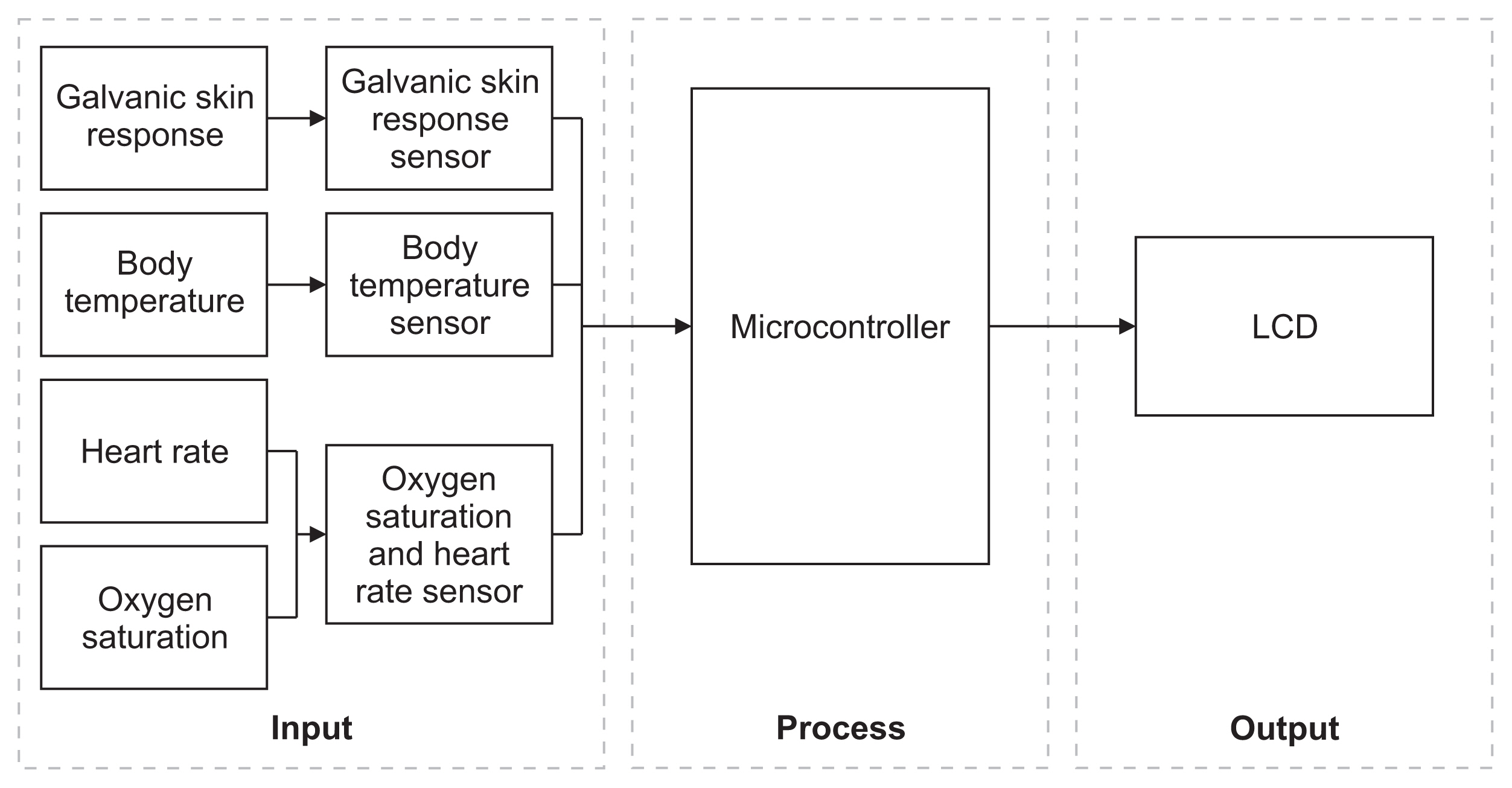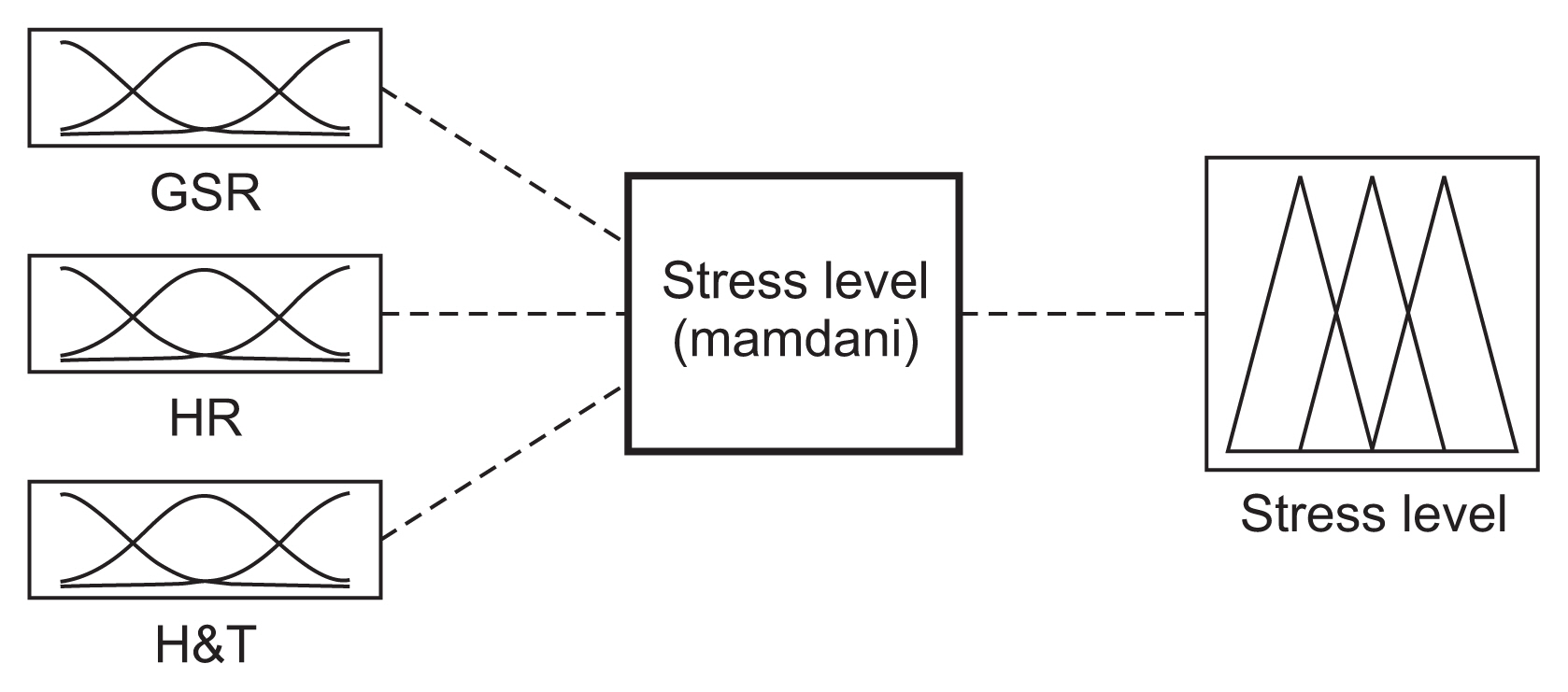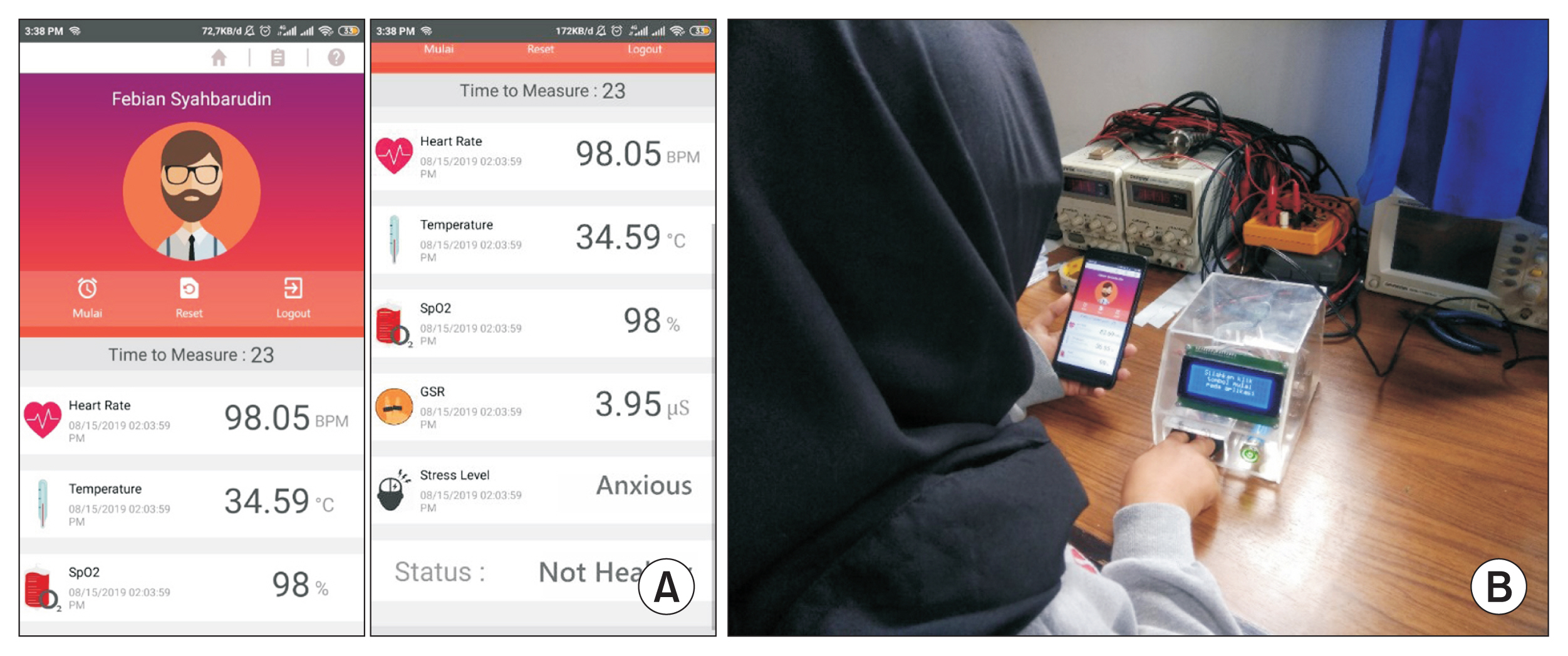Healthc Inform Res.
2021 Jan;27(1):11-18. 10.4258/hir.2021.27.1.11.
Measurement Device for Stress Level and Vital Sign Based on Sensor Fusion
- Affiliations
-
- 1Department of Electrical Engineering, Politeknik Negeri Bandung, Bandung, Indonesia
- KMID: 2512620
- DOI: http://doi.org/10.4258/hir.2021.27.1.11
Abstract
Objectives
Medical health monitoring generally refers to two important aspects of health, namely, physical and mental health. Physical health can be measured through the basic parameters of normal values of vital signs, while mental health can be known from the prevalence of mental and emotional disorders, such as stress. Currently, the medical devices that are generally used to measure these two aspects of health are still separate, so they are less effective than they might be otherwise. To overcome this problem, we designed and realized a device that can measure stress levels through vital signs of the body, namely, heart rate, oxygen saturation, body temperature, and galvanic skin response (GSR).
Methods
The sensor fusion method is used to process data from multiple sensors, so the output that shows the stress level and health status of vital signs can be more accurate and precise.
Results
Based on the results of testing, this device is able to show the health status of vital signs and stress levels within ±20 seconds, with the accuracies of body temperature measurements, oxygen saturation, and GSR of 97.227%, 99.4%, and 98.6%, respectively.
Conclusions
A device for the measurement of stress levels and vital signs based on sensor fusion has been successfully designed and realized in accordance with the expected functions and specifications.
Figure
Reference
-
References
1. Yilmaz T, Foster R, Hao Y. Detecting vital signs with wearable wireless sensors. Sensors (Basel). 2010; 10(12):10837–62.
Article2. Uthayakumar GS, Sivasubramanian A, Kisho AG. A novel technique to monitor human body vital signs. Int J Biomed Res. 2013; 4(09):642–59.3. Khan F, Cho SH. A Detailed algorithm for vital sign monitoring of a stationary/non-stationary human through IR-UWB radar. Sensors (Basel). 2017; 17(2):290.
Article4. Satwik K, Ramesh NV, Reshma SK. Estimation and monitoring of vital signs in the human body by using smart device. Int J Innov Technol Explor Eng. 2019; 8(5):1035–8.5. Sun G, Matsui T, Watai Y, Kim S, Kirimoto T, Suzuki S, et al. Vital-SCOPE: design and evaluation of a smart vital sign monitor for simultaneous measurement of pulse rate, respiratory rate, and body temperature for patient monitoring. J Sens. 2018; 2018:4371872.
Article6. Dionisi A, Marioli D, Sardini E, Serpelloni M. Autonomous wearable system for vital signs measurement with energy-harvesting module. IEEE Trans Instrum Meas. 2016; 65(6):1423–34.
Article7. American Psychological Association. Stress weakens the immune system [Internet]. Washington (DC): American Psychological Association;2006. [cited at 2021 Jan 17]. Available from: https://www.apa.org/research/action/immune.8. Kupriyanov R, Zhdanov R. The eustress concept: problems and outlooks. World J Med Sci. 2014; 11(2):179–85.9. Cho D, Ham J, Oh J, Park J, Kim S, Lee NK, Lee B. Detection of stress levels from biosignals measured in virtual reality environments using a kernel-based extreme learning machine. Sensors (Basel). 2017; 17(10):2435.
Article10. Alberdi A, Aztiria A, Basarab A. Towards an automatic early stress recognition system for office environments based on multimodal measurements: a review. J Biomed Inform. 2016; 59:49–75.
Article11. Gjoreski M, Lustrek M, Gams M, Gjoreski H. Monitoring stress with a wrist device using context. J Biomed Inform. 2017; 73:159–70.
Article12. Akbar F, Mark G, Pavlidis I, Gutierrez-Osuna R. An empirical study comparing unobtrusive physiological sensors for stress detection in computer work. Sensors (Basel). 2019; 19(17):3766.
Article13. Greene S, Thapliyal H, Caban-Holt A. A survey of affective computing for stress detection: evaluating technologies in stress detection for better health. IEEE Consum Electron Mag. 2016; 5(4):44–56.
Article14. Mozos OM, Sandulescu V, Andrews S, Ellis D, Bellotto N, Dobrescu R, et al. Stress detection using wearable physiological and sociometric sensors. Int J Neural Syst. 2017; 27(2):1650041.
Article15. Betti S, Lova RM, Rovini E, Acerbi G, Santarelli L, Cabiati M, et al. Evaluation of an integrated system of wearable physiological sensors for stress monitoring in working environments by using biological markers. IEEE Trans Biomed Eng. 2018; 65(8):1748–58.16. Elmenreich W. Sensor fusion in time-triggered systems [dissertation]. Vienna, Austria: Vienna University of Technology;2002.17. Berman A, Snyder SJ, Frandsen G. Kozier & Erb’s fundamentals of nursing. 10th ed. Hoboken (NJ): Pearson;2016.18. World Health Organization. Pulse oximetry training manual. Geneva, Switzerland: World Health Organization;2011.19. Hadya PK. Rancang bangun alat pengukur tingkat stres menggunakan metode fuzzy logic [Design and development of stress level measurement using fuzzy logic method]. Surabaya, Indonesia: Institut Bisnis dan Informatika Stikom Surabaya;2014.
- Full Text Links
- Actions
-
Cited
- CITED
-
- Close
- Share
- Similar articles
-
- Anterior Interbody Fusion of the Cervical Spine: Clinical Study of 56 Cases
- A Study of the Difference of Vital Sign by Stress Reaction
- A Biomechanical Comparison of 2 Different Topping-off Devices and Their Influence on the Sacroiliac Joint Following Lumbosacral Fusion Surgery
- Advancing Patient Care: Innovative Use of Near-Infrared Spectroscopy for Monitoring Urine Volume in Neurogenic Bladder
- Biomechanical Comparison of Spinal Fusion Methods Using Interspinous Process Compressor and Pedicle Screw Fixation System Based on Finite Element Method






